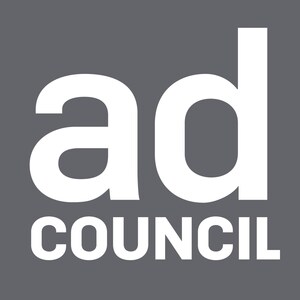National Campaign Launches to Protect Children and Families from Lead Poisoning
New national survey shows lead poisoning in homes is not top concern among parents
NEW YORK, April 20 /PRNewswire/ -- According to a national online survey released today by the Ad Council, only a third of parents in the United States are very concerned that lead poses a health risk to their children. However, lead poisoning affects more than one million children in the United States. If not detected early, children with high levels of lead in their bodies can suffer from damage to the brain and nervous system, behavior and learning problems (such as hyperactivity), slowed growth, hearing problems and aggressive behavior.
To view the multimedia assets associated with this release, please click: http://multivu.prnewswire.com/mnr/adcouncil/43516/
(Photo: http://www.newscom.com/cgi-bin/prnh/20100420/MM86129 )
In an effort to raise awareness of the consequences of lead poisoning among parents and pregnant women who live in homes built before 1978, the Coalition to End Childhood Lead Poisoning, U.S. Environmental Protection Agency (EPA), and U.S. Department of Housing and Urban Development (HUD) are joining the Ad Council today to launch a national multimedia public service advertising (PSA) campaign.
"Lead poisoning is a costly, tragic and irreversible environmental disease that robs children of their ability to reach their full potential - yet it is entirely preventable," said Ruth Ann Norton, Executive Director of the Coalition to End Childhood Lead Poisoning. "That is why we teamed with our partners at the EPA, HUD and the Ad Council to launch this national lead poisoning prevention and awareness campaign. Together, we can make lead history."
The most common pathway for lead poisoning is caused by deteriorating lead-based paint (on older windows, doors and trim, or walls) or through improper renovation, repair and painting activities that cause paint to chip, peel, or flake. Children are frequently poisoned by ingesting lead dust that has accumulated on their hands, fingers, toys, or clothing from lead hazard sources like floors and windowsills.
"Dust from paint containing lead is especially toxic to young children," said Steve Owens, EPA Assistant Administrator for Prevention, Pesticides and Toxic Substances. "Parents can protect their children from exposure to toxic lead paint dust by hiring a lead-safe trained contractor if they live in an older home and plan to renovate or repair."
The new PSA campaign primarily aims to reach parents and caregivers of children age six and under, and pregnant women, who are at the greatest risk for lead poisoning. The objective is to educate parents about the dangers of lead poisoning so they can take immediate action to safeguard their children.
"To grow up healthy, children need to live in healthy homes, and getting homes tested for lead is an essential part of that process," said Ron Sims, HUD Deputy Secretary. "There are approximately 38 million U.S. homes that still contain lead-based paint, so it's important to know the age of your home and get it tested if it was built before 1978."
The Ad Council's national survey released today found that when parents were asked what they were concerned about, only less than ten percent mentioned that lead poses a risk to their children's health. The majority of respondents rated cleaners and solvents, electrical outlets and prescription medicines as the home hazards they are most concerned about, while lead poisoning ranked second to last. Furthermore, among those respondents who used contractors to do renovations, only 38 percent were confident that they used a lead-safe contractor.
"Our research revealed that childhood lead poisoning is not a top concern among parents," said Peggy Conlon, president and CEO of the Ad Council. "Our partnership with the Coalition to End Childhood Lead Poisoning, EPA, and HUD will educate parents about the dangers and empower them to take simple steps to protect their children from lead poisoning."
Created pro bono by New York-based ad agency Merkley+Partners, the campaign includes television, radio, print, outdoor and Web advertising, which is available in English and Spanish.
"Merkley+Partners is proud to play a role in bringing awareness to the issue of lead poisoning. We believe the campaign is arresting, conveys a sense of urgency and will motivate parents and caregivers to act quickly to ensure their young children are safe," said Diane Hernandez, Group Account Director of Merkley+Partners.
The PSAs direct parents to visit a new comprehensive web site, www.leadfreekids.org or call a toll-free number (1-800-424-LEAD), to learn more about where lead can be found in their home, how to protect their children from exposure to lead and to know what to do if they or a member of their family is exposed to lead. The site, which is also available in Spanish at www.leadfreekids.org/espanol, encourages parents and other adults to download free toolkits in an effort to help eliminate childhood lead poisoning.
The new PSAs are being distributed to more than 33,000 media outlets nationwide this week. Per the Ad Council model, the PSAs will run and air in advertising time and space that is donated by the media.
The online survey was commissioned by the Ad Council and the Coalition to End Childhood Lead Poisoning and conducted in partnership with Lightspeed Research from April 2 to April 12, 2010. The sample consisted of 701 adults 18+ who are parents of children 0-6 or currently pregnant and live in homes built before 1980. There was also an oversample of approximately 469 parents in the ten markets where lead poisoning prevalence is the highest: New York, Los Angeles, Chicago, Philadelphia, Detroit, Baltimore, Washington DC, Milwaukee, Atlanta and Portland.
The Coalition to End Childhood Lead Poisoning
The Coalition to End Childhood Lead Poisoning designs, develops and promotes programs, policies and direct services to eradicate childhood lead poisoning and create green and healthy homes for all children. For more information about the Coalition to End Childhood Lead Poisoning, visit www.leadsafe.org.
U.S. Environmental Protection Agency
EPA leads the nation's environmental science, research, education and assessment efforts. The mission of the Environmental Protection Agency is to protect human health and the environment. Since 1970, EPA has been working for a cleaner, healthier environment for the American people. For more information about EPA, visit www.epa.gov
U.S. Department of Housing and Urban Development
HUD is the nation's housing agency committed to sustaining homeownership; creating affordable housing opportunities for low-income Americans; and supporting the homeless, elderly, people with disabilities and people living with AIDS. The Department also promotes economic and community development and enforces the nation's fair housing laws. More information about HUD and its programs is available on the Internet at www.hud.gov and espanol.hud.gov.
The Advertising Council
The Ad Council (www.adcouncil.org) is a private, non-profit organization that marshals talent from the advertising and communications industries, the facilities of the media, and the resources of the business and non-profit communities to produce, distribute and promote public service campaigns on behalf of non-profit organizations and government agencies in issue areas such as improving the quality of life for children, preventive health, education, community well-being, environmental preservation and strengthening families.
Merkley+Partners
Merkley+Partners is a full service marketing and advertising agency providing strategic direction to clients and creating print, broadcast, digital, social, viral, brand identity and CRM programs. Merkley clients include Mercedes-Benz, AXA Equitable, Arby's, Pinnacle Foods LLC and Schering-Plough. The agency was founded in 1993 and is a wholly-owned subsidiary of Omnicom Group Inc., a leading worldwide communications company.
SOURCE The Ad Council
WANT YOUR COMPANY'S NEWS FEATURED ON PRNEWSWIRE.COM?
Newsrooms &
Influencers
Digital Media
Outlets
Journalists
Opted In





Share this article